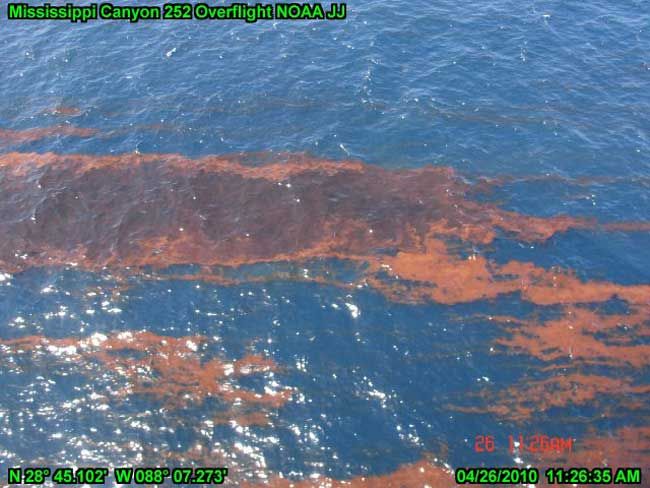Treated Cotton Could Help Fight Gulf Oil Spill

Cotton sheets soaked in a secret chemical have the ability to literally grab and transport oil from water, according to new research that could aid the Gulf oil spill cleanup efforts.
Unlike current oil containment materials, the treated fabric can both admit water and repel oil, allowing it to act as a filter rather than a barrier or absorber, explained researcher Di Gao at the University of Pittsburgh.
“It’s kind of like a spoon or a bucket,” researcher Di Gao at the University of Pittsburgh told Livescience. When dipped into the oil-tainted water, a trough made from the polymer-coated cotton keeps the oil in but lets the water flow through. Like a bucket, the cotton trough can be lifted out of the water and its oil transferred to a tanker.
“I believe that our technique will work and is currently the best way to clean up the oil spill in Mexico,” Gao said.
The material’s unique ability to filter oil from water comes from an unusual combination of properties: When soaked in a fluid that contains the polymer and dried in an oven or the open air, regular cotton sheets can both attract water and repel oil.
Currently, oil cleanup crews use oil containment booms and oil absorbent booms to stop the spread of oil and soak up as much oil as possible, said Steve Reilly, CEO of Slickbar, a major manufacturer of oil spill products.
Oil containment booms are floating barriers of fabric that extend about a foot underwater due to hanging chains. Absorbent booms lie on the surface of the contained areas and broadly remove oil in the absence of a human-operated skimmer.
Sign up for the Live Science daily newsletter now
Get the world’s most fascinating discoveries delivered straight to your inbox.
Water-attracting containment booms are typically used in a fire because they have a wicking effect, Reilly said. “I’ve never heard of that before,” he said when asked about an oil boom that could repel oil.
The benefits of a filter
The polymer-impregnated cotton has several advantages over current oil spill clean-up booms, according to Gao.
While current booms in use at the Gulf Oil Spill cleanup repel both water and oil, the new material lets the water pass through. That capacity allows troughs made from it to scoop oil from water and actively clean an area, as well as gather oil from pieces of water deeper than current booms can reach.
And while current oil absorbers must be disposed or burned after reaching saturation, the new material is re-usable and actually recovers the oil, Gao said. Afterwards, the oil can be sent straight to a refinery and added to the national supply chain as though nothing was ever lost.
On top of all of this, the material is simple enough for anyone to produce. “Yes, cleanup crews can make these filters themselves,” Gao said. All that’s required are industrial-size cotton sheets, containers for soaking, lots of empty space for them to dry, and of course the special solution.
“I don’t know why nobody’s contacting me,” Gao said in response to recent news reports of a catastrophe of boom shortages along the Gulf coast. “They should talk to me.”
Innovation meets calamity
The chemical used to soak the cotton to make it oil repellant is commercially available, said Gao, but he declined to disclose what its ingredients were. The product of 4-5 years of research, Gao and his team were originally planning on patenting the material, until disaster struck.
“It takes a long time to patent this, the situation is so urgent that we’re trying to use it to clean up the oil spill,” he said.
Tests along the Louisiana coast confirmed the success of the method, he said, and video of him demonstrating showing the cotton filter’s ability to separate oil and water is currently posted on YouTube.
According to Gao, the water in the video is seawater from the Gulf and the oil is crude from a rig in the Gulf, acquired from a source he could not name.











